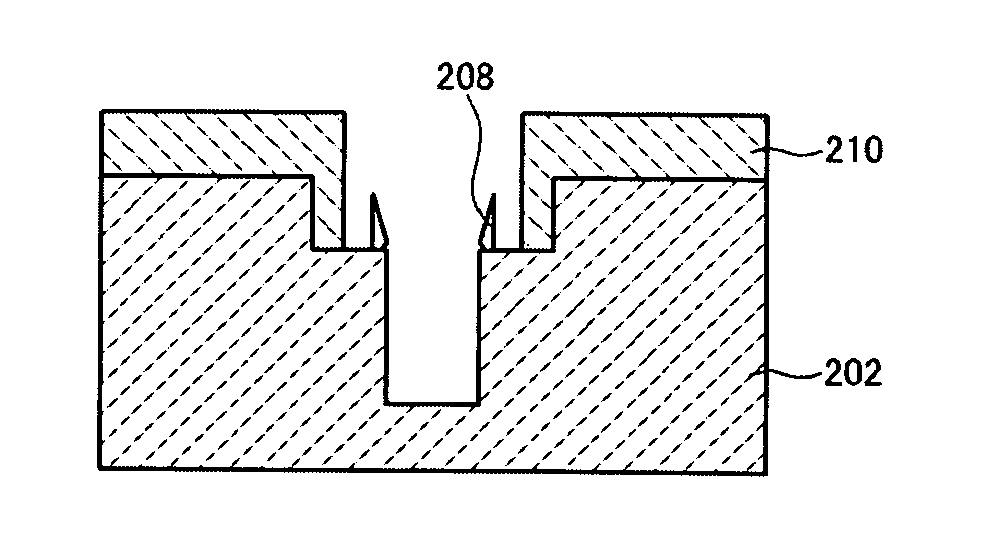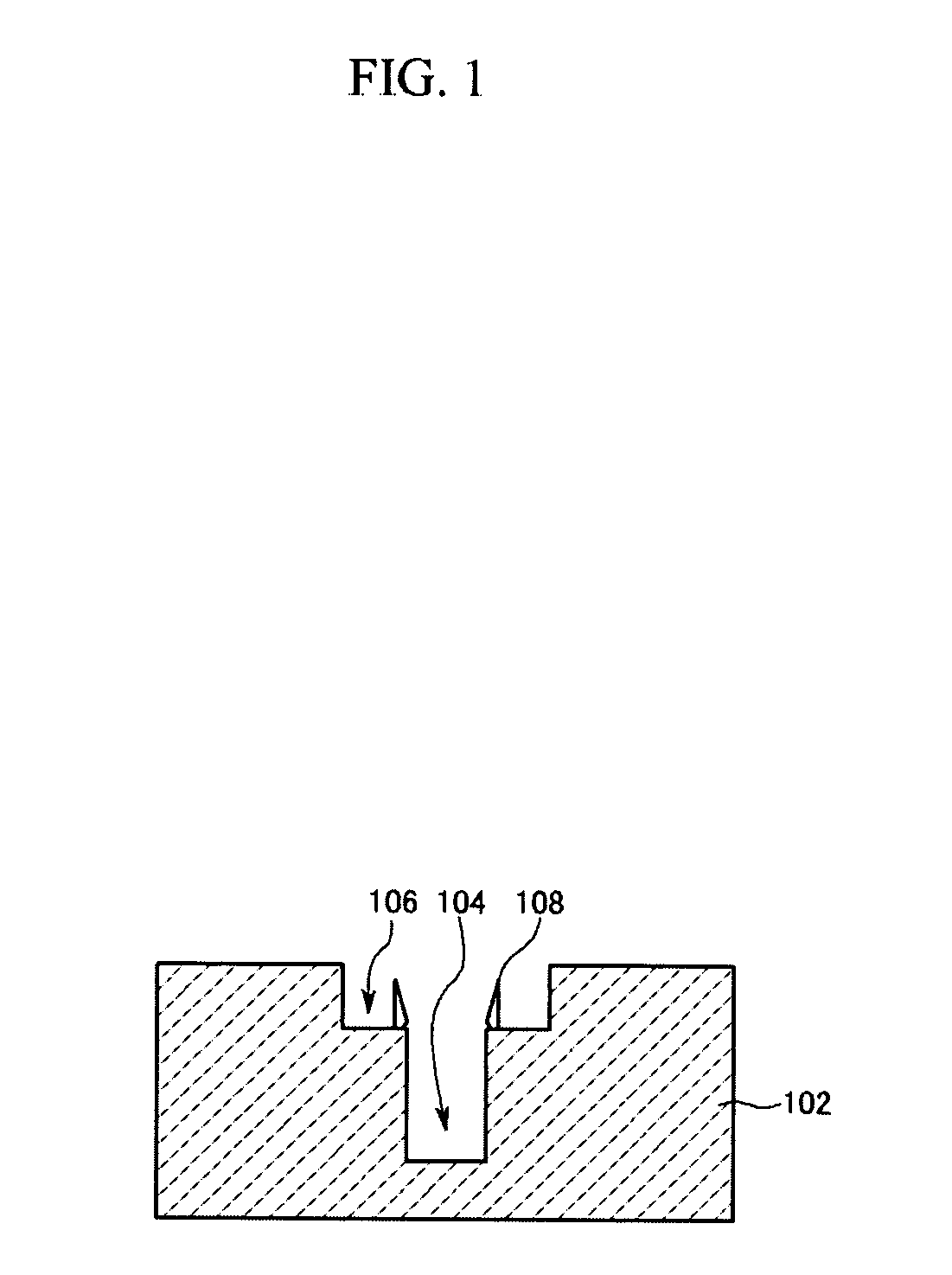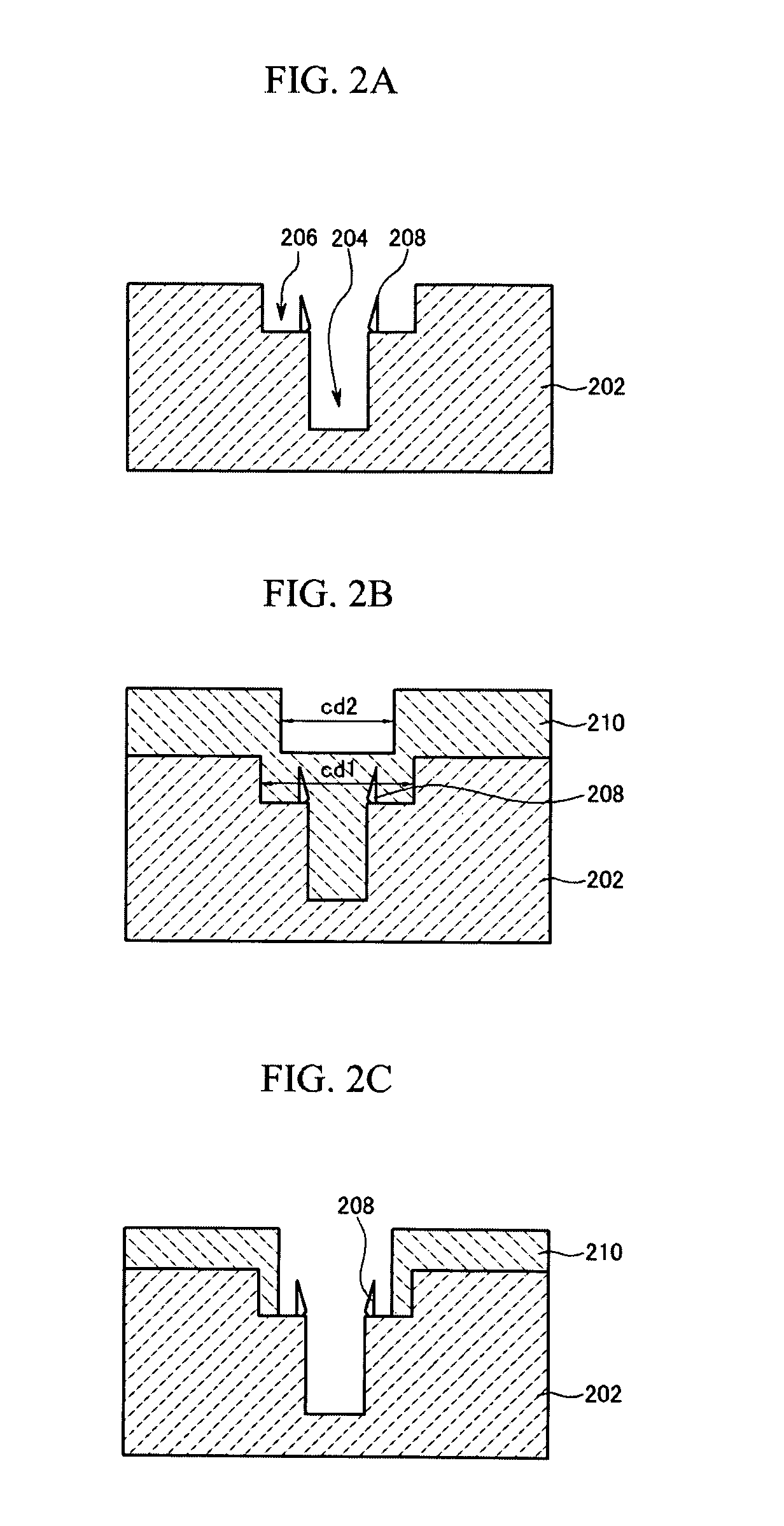Method of manufacturing a semiconductor device
a manufacturing method and semiconductor technology, applied in semiconductor/solid-state device manufacturing, basic electric elements, electric devices, etc., can solve the problems of electrical characteristics degradation, reliability and productivity of semiconductor devices, and the inability to fully remove the oxide layer easily, so as to prevent the degradation of electrical characteristics
- Summary
- Abstract
- Description
- Claims
- Application Information
AI Technical Summary
Benefits of technology
Problems solved by technology
Method used
Image
Examples
Embodiment Construction
[0023] An exemplary embodiment of the present invention will hereinafter be described in detail with reference to the accompanying drawings.
[0024] According to an exemplary embodiment of the present invention, after a via hole and a trench are formed on or in a semiconductor substrate, a photoresist is formed entirely (e.g., blanket deposited) thereon, and then the photoresist is partially removed (e.g., by photolithography and development). Accordingly, a polymer residue (for example, a crown defect) may be exposed. After the exposed polymer residue is removed, the photoresist remaining in the via hole and the trench is removed by a plasma treatment. As a result, the trench may be free from a polymer residue.
[0025]FIG. 2A to FIG. 2E are cross-sectional views showing sequential stages of forming a trench on a semiconductor substrate by an etching process according to an exemplary embodiment of the present invention.
[0026] Referring to FIG. 2A, a photoresist pattern is formed on a...
PUM
 Login to View More
Login to View More Abstract
Description
Claims
Application Information
 Login to View More
Login to View More - R&D
- Intellectual Property
- Life Sciences
- Materials
- Tech Scout
- Unparalleled Data Quality
- Higher Quality Content
- 60% Fewer Hallucinations
Browse by: Latest US Patents, China's latest patents, Technical Efficacy Thesaurus, Application Domain, Technology Topic, Popular Technical Reports.
© 2025 PatSnap. All rights reserved.Legal|Privacy policy|Modern Slavery Act Transparency Statement|Sitemap|About US| Contact US: help@patsnap.com



